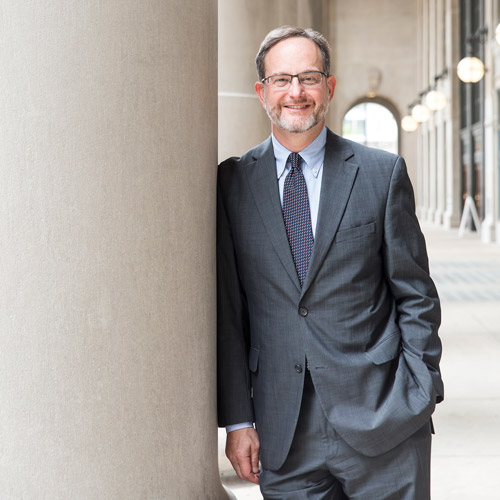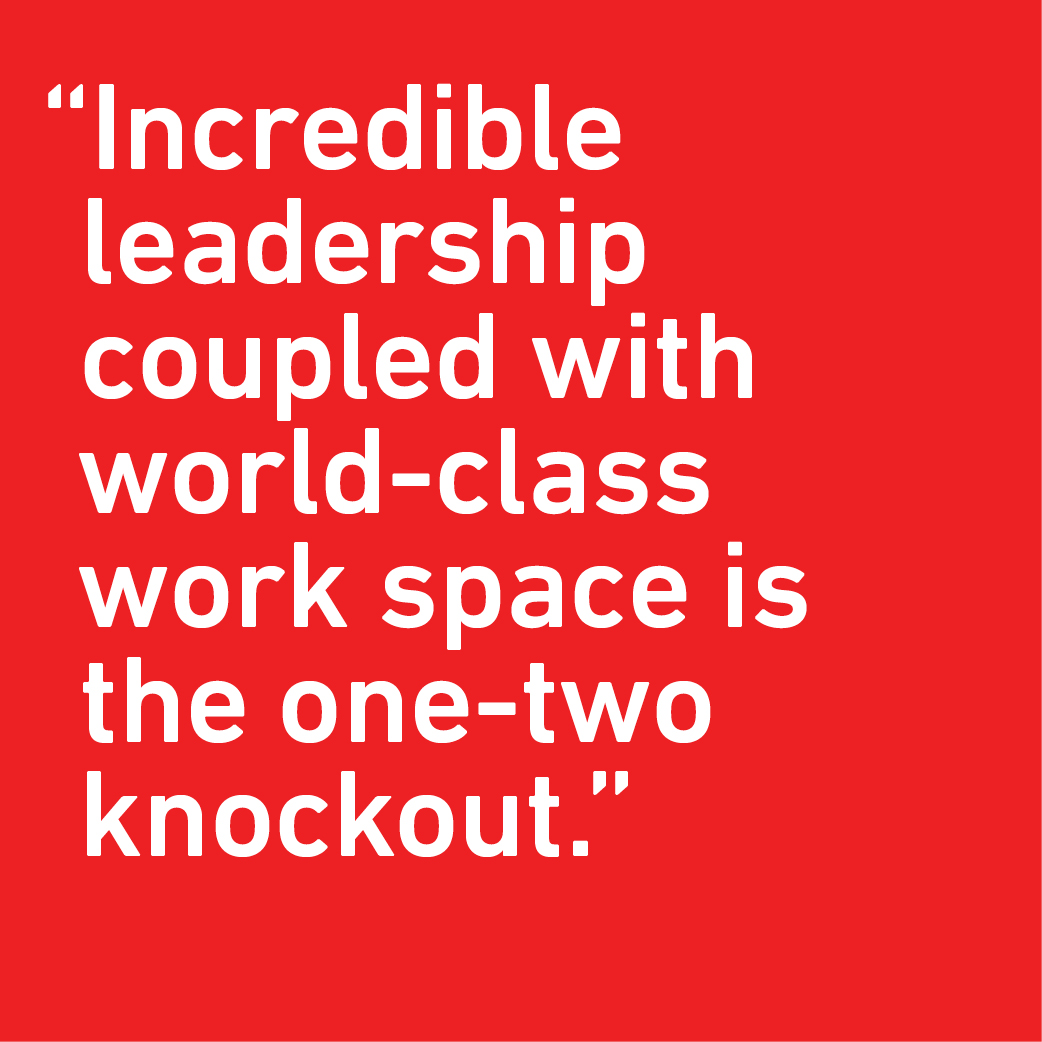In May 2016, Washington, DC, was named by the American Fitness Index as the fittest city in the United States for the third year in a row. So when CorePower Yoga was approached to be a part of a live-work-play-workout structure at CityCenter DC, the company replied with a resounding yes.
The new structure includes offices, residences, retail, and studios, and it’s the perfect first location to attract an active, athletic customer base, according to Jeff Gaul, CorePower Yoga’s chief development officer.
“The developer is essentially building a mini city,” he says. “We’re really working to create a beautiful environment to serve the Washington, DC, market and an area that previously hasn’t been served through boutique fitness before.”
Gerald Hines, founder and chairman of CityCenter DC, originally approached Gaul’s team about being a part of the project—which includes 458 residential apartments, 325,000 square feet of retail, and two buildings dedicated to office space—in 2014. The request was huge, but Gaul says he was excited to get to work and he immediately collaborated with Hines to create the best two-level facility that incorporated all of the unique elements.

“It’s important to understand that we aren’t cookie-cutter,” Gaul says.
Although all CorePower Yoga studios have similar elements, the DC location is positioned to specifically incorporate a community aspect for the residents who live in the building. The studio will share a lobby with indoor spinning facility Flywheel Sports. CorePower and Flywheel worked together on the shared entrance.
Gaul says the biggest challenge for his team in creating a studio within the 2.5-million-square-foot building has been coordinating all of the moving pieces—paying particular attention to ensure that construction doesn’t disturb other tenants.
“You don’t want to hear hammering when you’re paying a lot of money to live in a beautiful residence,” Gaul says.
Physical constraints within the building notwithstanding, the weather also presented hurdles. During the one-year timeline Gaul’s team had to complete the project, two blizzards hit the area. Although that presented its own set of scheduling challenges, the fact that CorePower is a boutique fitness concept—requiring an extra layer of insulation to ensure that the studios could heat to more than 100 degrees Fahrenheit and then cool down for the next class—presented yet another puzzle.
Thanks to extensive planning, however, including coordinating with the landlord, tenant coordinators, and construction team to ensure the project was delivered on a manageable timeline, Gaul and his dedicated team managed to make it happen.
The Washington, DC, project is one example of many in which CorePower Yoga positions itself as one of the leading boutique fitness concepts. By combining aesthetics such as bright changing rooms, wooden lockers, showers, retail space, and a community area, the company is able to attract a unique customer base to more than 150 studios nationwide. In order to expand, Gaul and the rest of the team are looking at infill options in existing markets for further expansion.
“[Considering] that we have so many studios, we know who practices with us—their age, their likes, and their dislikes,” Gaul says.
With this knowledge, the company deploys a demographic software system that measures which locations are most poised for success and the best path to expansion. At that stage, Gaul visits those locations to determine the best site within the marketplace, and sets the strategy for each market.
Even then, there are still determinations to be made. If Gaul is going to Miami, for example, he must decide where to go first—the city’s north side or its south side? Then, it’s about how many locations the company wants to build and how to approach each market in terms of convenience to the company’s members—which extends to matters such as whether parking is accessible enough to keep members coming back.
CorePower’s design, which integrates the community into its spaces, puts it ahead of other service retailers, Gaul says. He adds that strong marketing on the front end can be as strong an incentive as the physical spaces he and his team create.
This kind of work is a summation of lessons Gaul learned in his time with Gap Inc., Chico’s, and The Limited.
“By working with retail in various locations from suburbia to major cities with some of the biggest companies in the world, I’ve been able to translate all that I have learned into what I do on a daily basis at CorePower Yoga,” he says.


